Despite critical advancements in the tech solutions available to conservationists worldwide, many existing tools are cost-prohibitive in the landscapes that need them most. Additionally, those who create low-cost and open-source alternatives to pricey market tech often operate on tight budgets themselves, meaning they need more resources to promote their solutions to a broader market. We need increased communication around these solutions to highlight their availability, share lessons learned in their creation, and avoid duplication of efforts.
This group is a place to share low-cost, open-source devices for conservation; describe how they are used, including what needs they are addressing and how they fit into the wider conservation tech market; identify the obstacles in advancing the capacity of these technologies; and to discuss the future of these solutions, particularly their sustainability and how best to collaborate moving forward. We welcome contributions from both makers and users, whether active or prospective.
Here is how we see the current OSS space and how this group plans to change it by supporting both makers and users:
Many users do not appreciate the significant benefits of open-source tech. This group will educate users about the advantages and the need for open-source tech, specifically in the context of ecology work. We achieve this by stimulating regular discussions on the forum and by encouraging and supporting users to use open-source tools wherever possible.
Building OSS can be difficult. We want to support both established and potential makers who wish to develop OSS. The OSS group is a place where makers can find funding opportunities, ask current and potential users questions, and share their technologies.
Using OSS can be difficult. We also want to support adopters of OSS tech. We do this by offering a place for users to share challenges they face and crowdsource advice on things like technology choice or technical support.
Makers do not know what users want or need. The OSS group is a place that facilitates conversations between makers and users. This will give users a voice and ensure that makers are aware of the needs of users, enabling them to build better solutions.
The community is small and scattered. We want to grow an inclusive community of OSS practitioners. Our goal is to become the go-to place for discussions on the topic where people feel a sense of belonging.
Resources for getting started
- How do I use open source remote sensing data in Google Earth Engine? | Tech Tutors
- How do I use open source remote sensing data to monitor fishing? | Tech Tutors
- Low Cost, Open Source Solutions | Virtual Meetup
- What would an open source conservation technology toolkit look like? | Discussion
- December 2024 Open Source Solutions Community Call
Header image: Shawn F. McCracken
Group curators
- @Nycticebus_scientia
- | he/they
MammalWeb.org
Co-founded citizen science camera-trapping project with interest in developing 100% open source wildlife tech. Advocate for open science/open research. Former Community Councilor of the Gathering for Open Science Hardware.



- 4 Resources
- 25 Discussions
- 3 Groups
trying to understand and improve the welfare of all animals that can suffer


- 4 Resources
- 6 Discussions
- 7 Groups
- @briannajohns
- | she/they
Gathering for Open Science Hardware (GOSH)
Interested in the application of open source technologies for conservation research.



- 9 Resources
- 5 Discussions
- 4 Groups
No showcases have been added to this group yet.
Andigena ID+ es una empresa Colombiana dedicada a promover la conservación de la biodiversidad de manera integral a través de la investigación y el desarrollo.
- 0 Resources
- 0 Discussions
- 5 Groups
University of Suffolk
Researcher on the 8 Primates Project
PhD student- biodiversity monitoring using acoustic data


- 0 Resources
- 2 Discussions
- 9 Groups
- @RobMCook
- | He
Ecologist specialising in human-wildlife conflict research. PhD in elephant ecology.

- 0 Resources
- 2 Discussions
- 4 Groups
- @Durgananda
- | He
- 0 Resources
- 0 Discussions
- 19 Groups
- @hjayanto
- | He/Him
KONKLUSI (Kolaborasi Inklusi Konservasi - Yayasan)
Your friendly Indo-Crocky-Croc



- 0 Resources
- 44 Discussions
- 17 Groups
- @veronicapmc
- | she/her/ella
I'm an Environmental Biology graduate from Columbia University with a passion for wildlife science, ecology, and conservation biology. I'm an early-career professional looking to get into the field of conservation technology and interested in related graduate programs.
- 0 Resources
- 1 Discussions
- 7 Groups
- @MStarking
- | she/her/hers
Ecologist and conservation researcher, currently an Assistant Professor at University of Michigan-Flint, research areas include landscape ecology, forestry and wildlife interactions, wildlife habitat relationships, spatial ecology, GIS.

- 0 Resources
- 1 Discussions
- 15 Groups
Tech for Conservation

- 0 Resources
- 2 Discussions
- 13 Groups
- @taylorcasalena
- | she, her, hers
sustainability strategist, naturalist, consultant
- 1 Resources
- 1 Discussions
- 6 Groups
Wildlife Conservation Society (WCS)
I am a devoted conservationist, natural resource management enthusiast interested in Elephant and Pangolin species and passionate about linking communities with environmental conservation

- 1 Resources
- 0 Discussions
- 13 Groups
Technologist and Visual storyteller focusing on social, conservations issues.



- 1 Resources
- 47 Discussions
- 17 Groups
- 1 Resources
- 1 Discussions
- 11 Groups
The Marine Innovation Lab for Leading-edge Oceanography develops hardware and software to expand the ocean observing network and for the sustainable management of natural resources. For Fall 2026, we are actively...
24 July 2025
Lead a growing non-profit to sustain open source solutions for open science!
19 July 2025
In this case, you’ll explore how the BoutScout project is improving avian behavioural research through deep learning—without relying on images or video. By combining dataloggers, open-source hardware, and a powerful...
24 June 2025
Weeds, by definition, are plants in the wrong place but Weed-AI is helping put weed image data in the right place. Weed-AI is an open source, searchable, weeds image data platform designed to facilitate the research and...
7 May 2025
Bringing you the latest in open-source technology for agriculture. This accompanies the Open Source Agriculture respository: Collating all open-source datasets, software tools and deployment platforms related to open-...
1 May 2025
Repository for all things open-source in agricultural technology (agritech) development by Guy Coleman. This accompanies the OpenSourceAg newsletter. Aiming to collate all open-source datasets and projects in agtech...
1 May 2025
Fires in Serengeti and Masai Mara National Parks have burned massive areas this year. With Google Earth Engine, it's possible to quantify burn severity using the normalized burn ratio function, then calculate the total...
29 April 2025
Conservation International is proud to announce the launch of the Nature Tech for Biodiversity Sector Map, developed in partnership with the Nature Tech Collective!
1 April 2025
Modern GIS is open technology, scalable, and interoperable. How do you implement it? [Header image: kepler.gl]
12 March 2025
Join the FathomNet Kaggle Competition to show us how you would develop a model that can accurately classify varying taxonomic ranks!
4 March 2025
Last month, we spent four days trekking through Cerro Hoya National Park in Panama, where we hiked from near sea level up to the cloud forest to deploy Mothboxes.
14 February 2025
August 2025
event
September 2025
event
event
October 2025
event
November 2023
event
| Description | Activity | Replies | Groups | Updated |
|---|---|---|---|---|
| Congratulations! My first hydromoth was just arrived yesterday and so excited! Looking forward for the update from your project!!! |
|
Acoustics, Animal Movement, Climate Change, Conservation Tech Training and Education, Data management and processing tools, Emerging Tech, Open Source Solutions, Protected Area Management Tools, Sensors, Software Development, Latin America Community | 1 year 3 months ago | |
| Hi @zhongqimiao ,Might you have faced such an issue while using mega detectorThe conflict is caused by:pytorchwildlife 1.0.2.13 depends on torch==1.10.1pytorchwildlife 1.0.2.12... |
+6
|
AI for Conservation, Camera Traps, Open Source Solutions | 1 year 3 months ago | |
| Hi, this is pretty interesting to me. I plan to fly a drone over wild areas and look for invasive species incursions. So feral hogs are especially bad, but in the Everglades there... |
|
AI for Conservation, Camera Traps, Open Source Solutions, Software Development | 1 year 3 months ago | |
| Gotcha, well I look forward to seeing future iterations and following along with your progress!! |
|
Autonomous Camera Traps for Insects, AI for Conservation, Emerging Tech, Open Source Solutions, Latin America Community | 1 year 3 months ago | |
| 'Most importantly, we have to make it play a MIDI version of the DoctorWho theme song when you arm the device. That has to be the #1 feature if you ask me!' Seconded! |
+9
|
Acoustics, Animal Movement, Emerging Tech, Open Source Solutions, Sensors | 1 year 3 months ago | |
| Hi Danilo. you seem very passionate about this initiative which is a good start.It is an interesting coincidence that I am starting another project for the coral reefs in the... |
|
Acoustics, AI for Conservation, Animal Movement, Camera Traps, Citizen Science, Climate Change, Community Base, Connectivity, Drones, Emerging Tech, Human-Wildlife Coexistence, Open Source Solutions, Sensors, Software Development, Wildlife Crime, Funding and Finance | 1 year 6 months ago | |
| I would recommend going with Ubiquity 2.4Ghz devices which have performed relatively well in dense foliage of the California Redwood forests. It took a lot of tweaking to... |
|
Acoustics, AI for Conservation, Connectivity, Open Source Solutions | 1 year 6 months ago | |
| Fire detection is a sort of broad idea. Usually people detect the products of fire, and most often this is smoke.Many home fire detectors in the US use a radioactive source... |
|
Community Base, Conservation Tech Training and Education, Data management and processing tools, Ethics of Conservation Tech, Human-Wildlife Coexistence, Open Source Solutions, Protected Area Management Tools, Sensors, Wildlife Crime | 1 year 6 months ago | |
| Super cool! thank you for sharing! |
|
Animal Movement, Open Source Solutions | 1 year 6 months ago | |
| Hi folks! Happy 2024 and thanks in advance for your patience in case I over-used tags. If you’re using any form of natural language... |
|
AI for Conservation, Citizen Science, Climate Change, Conservation Tech Training and Education, Data management and processing tools, Early Career, East Africa Community, Emerging Tech, Ending Wildlife Trafficking Online, Ethics of Conservation Tech, Human-Wildlife Coexistence, Open Source Solutions, Software Development, Wildlife Crime, Women in Conservation Tech Programme (WiCT) | 1 year 7 months ago | |
| This was one of my all time favourite Variety Hour talks! @wschan gave us an awesome walk through the open-source low cost acceleratometer... |
|
Animal Movement, Open Source Solutions, Sensors | 1 year 10 months ago | |
| ooh very cool Salman! Amazing how much tracking devices have come down in price over the years and LoRa/LoRawan is just such a perfect fit for GPS data. Thanks heaps for sharing.... |
|
Build Your Own Data Logger Community, Open Source Solutions | 1 year 11 months ago |
ProxLogs - miniaturised proximity loggers
14 October 2019 10:00am
Have your say: take the WILDLABS Tech Community Survey 2020
8 July 2020 12:00am
From Autonomous Cars to Aqualink: Developing a Reef Monitoring System
9 June 2020 12:00am
Webinar: The Next Generation Of Animal Telemetry
 BOEM
BOEM
1 June 2020 12:00am
Competition: 2020 Hackaday Prize
26 May 2020 12:00am
Are you working on an open-source project? Tell us about it + link to your github repository
11 March 2019 4:51pm
9 April 2019 2:03pm
Hi Everyone,
Unfortunately this is a bit last minute before the virtual meetup, but I've been working with drones on various wildlife conservation projects since 2013. I've uploaded a sample of some of my work to github here: Christmas Island (2015)
I'm interested in contributing to the hardware development of open source collars, tags, sensors, and camera traps. I'm hoping through collaboration, we can establish a common platform to reduce the cost, effort, and skills necessary to collect data essential for conservation efforts.
11 April 2019 1:55pm
Hello everyone,
I work with a number of camera trapping projects (primarily in Africa, but some North American imagery) which we host on Zooniverse, and we rely on a combination of citizen science and machine learning to process our images. Our project has code available online to assist with automatically identifying animals in camera trap images by training and applying a deep neural network. You can access that information https://github.com/marco-willi/camera-trap-classifier !
16 August 2019 8:54pm
Hello,
Ours is the SensorStation: https://github.com/cellular-tracking-technologies/SensorStation/
It is a multi-channel radio receiver based on Raspberry Pi for a variety of wildlife tags and sensors. It can store data locally, and optionally, transmit it over cellular, WiFi or ethernet connections to the cloud. It supports all sorts of RF technologies, such as FSK or LoRa, from 142MHz to 1000MHz as well as 2.4GHz. It has quite a few USB ports, so it can support SDR as well (which some people have been doing). It also accepts a variety of I2C accessories, such as environmental sensors.
One of the challenges with open hardware development is ultimately making your idea a reality beyond the prototype stage. With it comes production costs, sales, fulfillment, and customer support -- and ultimately running some sort of business.
I think it is important to find a commercial partner to take on this role.

Environmental Management with Raspberry Pi
22 May 2019 6:35pm
25 May 2019 1:29am
Hi Marysia,
Naturebytes is a good start, there are a number of projects running using their Raspberry Pi wildlife camera traps.
Kind regards,
Alasdair
Virtual Meetup Discussion: Low-cost, Open-source Solutions
8 April 2019 6:11pm
16 April 2019 4:27pm
Hi everyone,
Thanks for joining us at the meetup last week! If you missed it, @TaliaSpeaker has just posted the recording and her fanastic notes from the meetup. In this one, she's also included a list of recommended reading, compiled from all the resources you were sharing in the chat.
There were some threads of conversation that came up that I'm interested to pick up here. If there are others, please do pop them below or use the reply as a new thread option below to break off into new discussions.
1. Help offered vs Help needed
Every meetup we get people joining who share in their registration that they are either looking for projects to get involved in, or need to find tech savvy people to help them with specific projects. Meredith (@snapshot_serengeti) is nice example of this. She came to meetup needing to design and build novel field equipment, and wanted to know who she could partner with to construct the designs. She's now started a thread about her needs and is getting lots of help here. Likewise, @Carl_Emogor was looking for specific advice about tech for studying pangolins and has had feedback here.
Q: Ideas for how we can facilitate this better around the meetups, or this good enough? Should we have a 'community announcements' thread attached to each meetup where people can say 'i can offer this'/'I need this'? Or is there a better way you've experienced elsewhere?
2. Mapping the conservation tech ecosystem
This comes up so. often. I get asked to contribute to this sort of map every other week, and I know of a handful of exsiting spreadsheets being maintained by people that go some way to answering this quesiton for various parts of our community (specific tech, specific conservation challenges). I think it's been raised every meetup as a good starting point, but it's been a particularly strong point of discussion in this meetup and the next gen tracking tech discussion. So my question is,
Q. Who is interested in this and where do we start? Are there examples from other sectors/communities of this sort of thing? Do we need to build out WILDLABS with new functionality (e.g. beef up profiles , tags + introduce project pages) to make it real, or is there an easy first step we could do right now?
3. Swap meet?
@Rob+Appleby raised this after the meetup:
Also, on a complete side note, I have about 25 used 9602 Iridium modems and patch antennas, that I am happy to donate to someone through WILDLABS, and possibly a few other useful bits and pieces if there's any interest out there? And it got me thinking that a "swap meet" or donation page could be a useful resource maybe? I was thinking about all those VHF and GPS collars sitting in cupboards and drawers around the world that could be recycled/re-used etc. And David mentioned his Trident donation... Just a thought.
I think this sounds like a great idea! @Rob+Appleby - first step could be to take it forward and reply as a new thread below, throw it out there and see if others are interested?
UPDATE: Continued here
4. Specific space for sharing funding opps
@kemprachael, you raised this, could you elaborate a little more on what you were thinking? My first impulse is that it's totally possible and probably needed, but I'm curious to explore more about what you want from it. Is it a new group, is it just a test thread as a start?
5. What is a platform?
@Alasdair - you were keen to get into the details of the platform - to pull out what is needed and how to sustain each part. I'm up for it, this is one to break off into a new discussion?
6. Financial sustainability of open source projects
@Freaklabs has made a great start getting into the depths of this discussion topic here. He's pulled the relevant questions from the list above and shared his perspective/experience in response to each one. It would be great to hear some other voices in response to the questions, so you're interested in the topic and have ideas/experience, check it out.
7. Wildbook Q&A
TBC - there was obviously a LOT of interest in Wildbook, so we're talking with the team about having a specific space where you can get all of your questions answered. It'll likely be a thread - maybe live? - we'll keep you posted.
Finally, if you have ideas for what you'd like to see in future meetups, drop them in this thread here. I've done a summary of where we're at in responding to requests to-date, and I've also shared the ideas we're throwing around for season three. They are by no means concrete, so now is the time to help shape them.
Thanks
Steph
17 April 2019 4:32pm
Hey folks,
I've written a collection list of resources about open hardware for conservation. Maybe it is useful for somebody here: https://blog.niklasjordan.com/conservation-technology/
If you have any resources I've forgotten, please share the stuff with me, and I will add it to the list.
- Niklas
17 April 2019 4:58pm
Daaaamn! That's a great list.
Akiba
Financial Sustainability of Open Hardware Projects
12 April 2019 12:44am
12 April 2019 2:02am
Q: Would both designers and customers both be interested in having a UK producer holding stocks of open source designs? (UK)
This is a really interesting question because rather than dealing with a business model from the point of view of a manufacturer, it's dealing with it from the point of view of a distributor. A distributor takes a portion of the markup of a product sale in exchange for selling the product through their channel. In many cases, it's quite a significant portion and is normally around 40 to 50% of the total margin of the product (if it's a distributor with it's own retail channel, ie: Sparkfun).
When I work with distributors, I evaluate them based on the value-add they provide. For a distributor to earn their portion of the markup, they have to provide some unique service that will help increase sales or provide value to the customers of the product. For example, if they are skilled with the product and can handle both customer technical support and returns locally or in a local language, that's a value-add for my customers that I'm interested in. Or if they have large volumes of targeted traffic for the specific niche I'm interested in and can increase sales more than I could do myself, than that's also a value-add for me.
If they're willing to purchase product and pay up-front or manufacture my products for their local market with a commission to me, then that's also a value-add to me. Most distributors accept products on consignment and pay out only when products sell. Unsold and returned products get sent back to the manufacturer. If they pay upfront or manufacture, the vaue they bring is that they absorb the inventory risk which means I don't have to.
If it's just to sell my products through their channel on consignment without having a specific targeted local audience, then I'd have to really think hard about it. If I can do the same type of thing by just listing my products on Amazon and using Amazon's FBA service with local warehouses, then I'd rather do that and pay the fixed fee to Amazon. I can just absorb that into the final retail cost and since it's not a percentage of retail cost, it won't scale with the cost.
So the answer is that if you're a middle man or considering using a middle man such as a distibutor, it's important to understand what value-add they bring and whether the margin they absorb is worth it.
Akiba
12 April 2019 5:18am
Q: How to balance low cost and high quality (India)
Q: QA in open source solutions? (UK)
I'm going to address both of these questions together. In regards to the the first one, I think we need to clarify the definitions a bit since "low-cost" and "high quality" are very ambiguous terms. They'll mean different things to different people. I've addressed the term "low-cost" in a previous post, where I think there should be less focus on cost and more on value. That means providing a clear benefit/s to the target customer. Cost is a dangerous game to play in where you don't really want a price war unless you have a clear strategy going into it.
In regards to "high quality", this can also mean many different things. To some, high quality means rugged, high reliability, or a long usable life. To others, it means good customer support, documentation, and training materials. In terms of reliability, no matter the cost, you need to have a test setup, more likely some automated test setup. This would be a minimum in terms of quality and QA. You can get customized test jigs made using bed-of-nails and toggle clamps or you can make them yourself. It's then up to you to create the test software to automate the testing as much as possible. I would consider this a standard QA procedure, regardless of whether it's open source or not.
In terms of quality, perhaps it could mean ruggedized which is highly dependent on the application. If it's going to be on an animal or in an environment where it will experience a lot of vibrational shock, then you'll need a vibration table or device to test it against to see where the statistical points of failure are. I've even used recycled massage vibration motors from motel beds to test parameter like this.
If it's going to potentially be deployed in the Antarctic or Sahara Desert, then you need to define a temperature range which covers these extremes and test for that. If you're selling your product at a cost that won't allow you to do this testing, or your customers aren't willing to pay for this kind of testing, what you can do is sell graded versions of your device. The standard version might have an operating range of 0 to 50 deg C which covers most applications. Then there can be ruggedized, graded, or premium versions which are tested from something like -30 to +85 deg C for harsher climates. These would usually require special environmental testing chambers which need to be rented or purchased.
It's also possible that you might need to use special parts for these such ICs which are graded for industrial use. Many ICs have a commercial version and industrial version. These particular devices should of course cost more since they require much more thought, testing time and effort, and also more expensive components.
No matter what, it's important to have documentation, support, and training materials for your products. Without these, it's unlikely you'll get much adoption. If you're selling things at a cost that doesn't value these things, then you probably have a pricing issue or you're focusing on the wrong types of customer. You don't want customers that only think about price above everything else.
So perhaps I would say that rather than looking at high quality vs low cost, I think it's more important to focus on high value, which means features that bring benefits to your customers. This only comes from working closely with the people using your device, listening to them, and incorporating their feedback.
15 April 2019 12:08am
Excellent Akiba,
Thank you for your detailed thoughts and for sharing your experiences.
Sustainability of open source projects - a look at Octobox.io
28 January 2019 4:01pm
20 February 2019 11:11pm
Hi @cshclm and @heidi.h
I must say, I was delighted to see that you both joined this thread as I was actually about to start using Camelot to manage the collection of camera trap data to support the building of a machine learning / neural net model for Asian elephants, both optical and thermal. I won't go in to too much detail as I'll post an official update in a few days time on Wildlabs, but I wanted to quickly share my reasoning for selecting Camelot as it may be interesting (this was before you both posted);
- I could customise the sighting fields / meta. This one feature is powerful as now I can add "distance to target animal" or whatever I needed, safe in the knowledge that I could build a solid database.
- If I needed to get under the code, I could.
- If I like it, I'd be interested in supporting it or contributing financially too to support your time if I needed a certain section changing or a bespoke tweak - why? It's more time efficient to ask you to make a technical change to achieve what's needed and write this in to the project grant than myself spending 10x the time and not concentrating on the larger picture and delivery of the project itself.
- Because it was open source and because I could include it in a larger library of other open solutions (hardware & software) safe in the knowledge that it would exist regardless of grant based sustainability.
Expanding upon your thoughts and comments above, it made me think how my reasons to use Camelot may be different to a traditional camera trap user, or someone only needed the built in functionality. Could it be that the default, already very good, already well thought out ability to control and customise the software delivers out of the box? It may be a reason as to why you haven't seen a desire to fork or fix anything that needs urgent attention - then again, my desire to use Camelot is different, as I had a private intention specific to my project - and that may be a good path for you to follow if you can attract others willing to contribute for their special projects, that ultimately pays a little salary and feeds back features to the core. A kind of "freemium" model as described by @Robert+Hutchinson but with a price tag for your custom support and time to help projects that need / write in funding to advance the tool for their own needs, but share it on openly by default could be something to explore.
11 March 2019 3:44am
Great thread!
Though I don’t develop open source conservation tech myself (to date!), I’m quite interested in how this space evolves, for software but perhaps even more for the hardware side, given the intrinsic challenges of working with a physical product. My interest extends to the issue of viability: what does it take to make these great initiatives float, and how/who should fund them. As a quick intro, I’m founder (and current president) of the SCB Conservation Technology Working Group, which is keen to promote open source tech development, as Alasdair mentioned.
I enjoyed reading this thread. It was great to see Alasdair’s perspective (which I knew from past discussions) as well as others’. And I found out about Camelot (and your struggles to keep it alive), which I didn’t know before, but I’ll definitely check :-)
Alasdair’s Arribada Initiative is a great experiment, and a very necessary one. This is mostly uncharted territory for open conservation hardware. Last year, I organised a workshop with Andy Hill and Peter Prince (of AudioMoth fame) on roadmapping an open-source acoustic platform. We had a discussion with ~40 participants with interest and experience in wildlife acoustic monitoring and asked them what they’d like to see in an open acoustic platform (e.g. could be an extension of AudioMoth). We also discussed about the concept of open source technology (here, mostly hardware and associated control software) and realised that many of them hadn’t thought about the implications of open source, including the (by default) lack of product warranty and support. If, as an experiment, the Arribada Initiative works, how can we (as a discipline) support more of its services? We have an opinion piece (currently in review) suggesting the value of an intergovernmental entity (or entities), given the benefits would transcend individual projects/organisations (yeah, I know, good luck setting that up!). Interesting discussion, and one we should have collectively.
Two other (related) exciting discussion points:
- I find commercial open source conservation technology to be a very exciting space, plenty of challenges but also opportunities. The example of the company Arduino comes to mind – plenty of cheaper (legal) “copy” products but these guys are still operating. Of course, the context is very different to a hypothetical open-source conservation tech device (think AudioMoth) but would be interesting to look deeper into a few examples within the hardware world.
- Can commercial companies co-exist with cheaper open-source products? Is there a niche for higher-end more expensive company-supported devices when one can buy way cheaper ones? I think there is scope for some degree of niche differentiation that keeps commercial companies alive in this brave new world. What do you think?
10 April 2019 7:30am
Hi jlahoz.
In reply to your questions:
"I find commercial open source conservation technology to be a very exciting space, plenty of challenges but also opportunities. The example of the company Arduino comes to mind – plenty of cheaper (legal) “copy” products but these guys are still operating. Of course, the context is very different to a hypothetical open-source conservation tech device (think AudioMoth) but would be interesting to look deeper into a few examples within the hardware world."
It sounds like there were a lot of people asking questions about financial sustainability of open source hardware for last night's virtual meetup. I've been involved in open source hardware commercially for over 12 years now. I helped LadyAda set up her first assembly line for Adafruit, was a board member of the Open Source Hardware Association, and watched the open source hardware community as it went through it's evolution to what it is today.
Commercial open source hardware is definitely viable and doesn't necessarily need to be artificially sustained by grant funding. That said, you do need to understand basic principles about business and manufacturing if you are going to survive as a manufacturer.
I think the most basic mistake I often see beginning manufacturers make is moving straight to design and production without marketing. Marketing is the most important part of maintaining a financially sustainable business, no matter open source or not. What usually happens is people often overestimate the demand for their widget and get a large amount made and assembled. They then discover a critical mistake or feature that they overlooked because they didn't work closely enough with potential customers. For the AudioMoth, this seems like it was mitigated by working closely with the acoustic survey community and also verifying demand ahead of time using the Group Gets platform.
Beyond marketing, it's not enough to design working hardware. The first working version is just the start of an iterative process to either bring the manufacturing cost down or improve the feature set of the device. As the cost comes down, the margins improve and those cost savings can either be passed on to the customer to be more competitive (if there's a lot of price competition), reinvested into the company to improve capabilities (ie: buy an automated pick and place machine or hire employees), or kept as profit.
For FreakLabs and Hackerfarm, we have our own automated assembly line which allows us to manufacture specialty or low-volume production runs, usually up to around 100 boards. Beyond that, we normally send it out to an assembly house in China. We focus on production of custom designs for specific consulting projects but also run a small webshop with some of our mainstay products.
When we design, we design for both functionality and production. When possible, we normally select parts that are commonly found on motherboards, mobile consumer electronics, or otherwise are commonly found in the wholesale markets in China where many of the other low cost manufacturers source parts for their products. The reason why is that if a part ends up on a motherboard or cellular phone other than the main processor, it's basically a commodity product and the price has already been driven into the ground.
For example, the MCP73831 lithium-ion charging IC from Microchip is about $0.43 in quantities of 100 from Digikey. The equivalent TP4057 lithium-ion charging IC commonly found in consumer tablets and mobile USB chargers is about $0.03. It's also a part commonly found on projects by Adafruit and Sparkfun. All of us have purchasing and shipping agents in China to source and ship parts to us from these wholesale markets.
The average markup for a design at Arduino, Adafruit, or Sparkfun is usually 4-6x the BOM (Bill of Materials) cost. For example, the BOM cost for an Arduino Uno is around $4.5 and the price at the Arduino webshop is $22 for a markup of ~5x. I would say the minimum markup for a manufacturer would be 3x the BOM cost, not including assembly cost since we all have our own assembly lines. You're pretty close to break even at this point if you factor in shipping, packaging, handling, testing, development expenses, and time. I normally wouldn't do a project below this markup since there are often more productive uses of time.
I also used to teach manufacturing to industrial designers at MIT Media Lab and my friend bunnie Huang and I would do an annual six week tour in Shenzhen, China where we took students from MIT Media Lab to various factories, had them design and manufacture a product "almost" from scratch, and let them understand the realities of production and how it differs from design.
If you're interested to hear more about manufacturing and sustainable business models for open source hardware manufacturers in conservation tech, let me know. It's actually very do-able.
"Can commercial companies co-exist with cheaper open-source products? Is there a niche for higher-end more expensive company-supported devices when one can buy way cheaper ones? I think there is scope for some degree of niche differentiation that keeps commercial companies alive in this brave new world. What do you think?"
Oh of course. Truthfully I don't think it is too difficult to compete with cheaper open source products, especially from low cost "pancake" factories in China. They have the name "pancake" since they crank out designs like pancakes. The most powerful tool a manufacturer has is the ability to write. If you're manufacturing an open source tool and you're a native English speaker, I think theoretically you shouldn't have any problem competing with a low cost Chinese knockoff company. People don't just buy a product, they buy the story behind the product. If you can write in native English, you have a tremendous advantage over a company that does not have that ability. If someone buys the cheaper product with no documentation, no story, and no recourse if there's a problem, you don't really want them as a customer.
This is where marketing becomes very important. Every company has a "right customer", which is someone who feels like the products are tailor made for them and understands the mission of the company, the purpose, story, and is willing to support the company and products. This is especially true for conservation tech which has a very strong purpose and story. Focusing on these customers and building relationships with them when you find them is one of the most important things you can do. Trying to win sales from people who only want the cheapest price is a losing game. It's much better to focus on blog posts, customer support, documentation, learning materials, case studies, and help them understand how the product makes their life better in some way. There's little chance any knockoff company could compete with that.
There are a lot more strategies along these lines, but if you're an indie manufacturer without economies of scale, you want to avoid focusing on price as much as possible. Price is something you compete on when you don't have anything else going for your products. If you have a well thought out marketing, pricing, and differentiation strategy, then things should work out quite well.
Anyways these are some thoughts on manufacturing in general and open source hardware in particular. Having open source designs and source code is an advantage rather than a disadvantage but the rest of the business model also needs to be aligned with this. Open source hardware businesses are based on community and this is where the focus should be. This also includes customer support. With this in mind, I think there are plenty of opportunities in conservation technology for sustainable open source businesses because of the passionate community around it...and even more so if you think of parallels to other industries.
For us (FreakLabs and HackerFarm), we also work in developmental infrastructure monitoring with World Bank and open source agriculture technology. There are uses for a lot of conservation tech in those areas (ie: dataloggers, wireless sensor networks, general purpose timers, timelapse/camera traps, etc). This also helps us in designing conservation technology. We know there are crossover markets that could potentially use these products or slight variations of them. Also wildlife conservation fits in thematically with many of our efforts to work with technology in a specific context and purpose. This is why we're really excited to be part of this community. We're looking to contribute in a way that can benefit the community but we have to make sure it will also benefit us. In that way, our contributions and participation can have longevity and be sustainable.
Hope that answers your questions :)
Akiba
OpenWild - Timer: An Open Source General Purpose Timer
3 April 2019 4:50pm
Field Instruments: Build it yourself (article in Nature)
22 May 2017 3:05pm







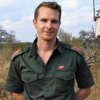

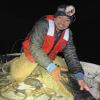


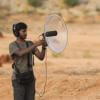













































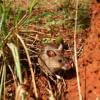









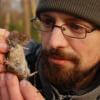
5 August 2020 2:05am
Hi Luci.
Did you ever get a response on this? I'd be interested in collaborating and helping develop out the system. We can probably assist in the manufacturing and assembly as well. Let me know if you're interested.
Akiba